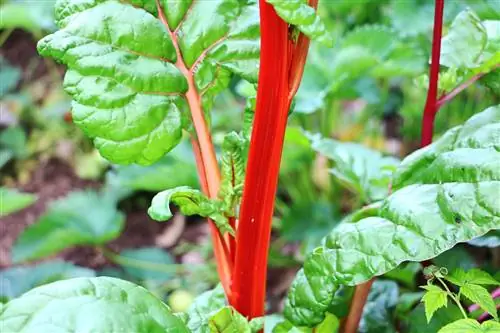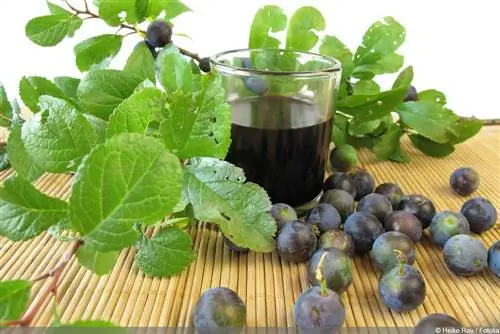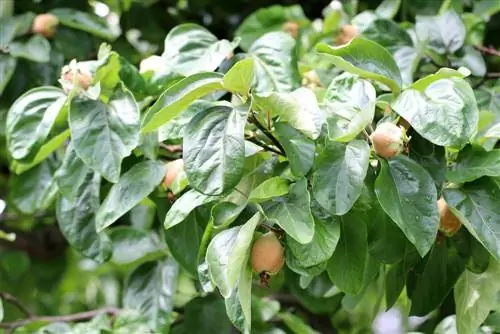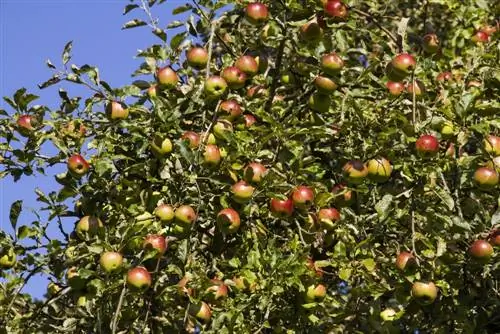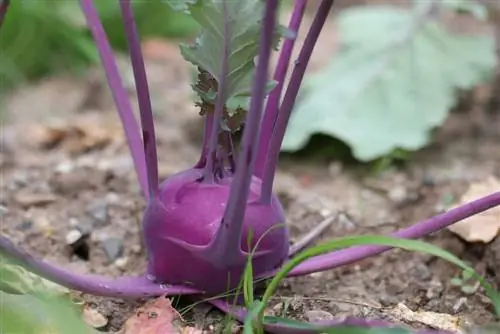- Author admin [email protected].
- Public 2023-12-17 03:39.
- Last modified 2025-01-24 12:45.
Blackthorn is an indispensable part of the natural garden. The thorny, abundantly flowering wild tree provides a safe haven for birds and insects and serves as a valuable source of food. Cultivated as a hedge, the robust rose plant keeps uninvited visitors and prying eyes away from the property. As if that weren't enough, the dark blue fruits can be used to make delicious jams, liqueurs and other delicacies. The following profile provides an overview of the advantages that a Prunus spinosa has to offer. Find out here how easy blackthorn is to care for and harvest.
Profile
- Plant family: Rosaceae
- Name of the species: Blackthorn (Prunus spinosa)
- Summer green, thorny wild fruit tree
- Growth height 150 to 400 cm, rarely up to 600 cm
- Well suited as a wind and privacy hedge
- Strong, highly branched root system for securing slopes
- White, simple flowers from mid-March to May
- Black-blue, spherical stone fruits in autumn
- Tasty food and vitamin-rich natural medicine
- Provides ideal living conditions and food for birds and insects
- Common names: blackthorn, blackthorn, hedge thorn
The small drupes with a diameter of 1 cm have served people as a fruity source of vitamins since the Neolithic period. In the course of evolution, Prunus spinosa developed into popular fruit trees, such as the house plum or the cherry plum.
Care
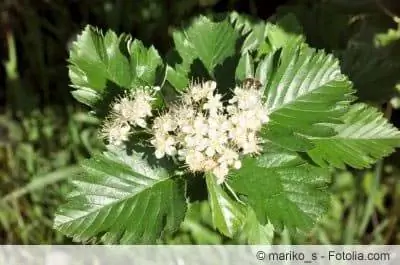
In the proper cultivation of blackthorn, the main challenge is primarily the strong thorns and the vehement urge to spread. All other care measures follow this, as a Prunus spinosa as a wild tree is characterized by its robust resistance and undemanding undemanding nature. Therefore, wear appropriate work clothing that protects against the sharp thorns when carrying out all planting and care work. In the best case scenario, you plant the wild shrub with a stable root barrier. A stone mason's tub without a bottom, a concrete ring or the strongest geotextile that specialist retailers have to offer are well suited. In addition, you can keep the busy blackthorn under control with regular pruning measures, which are explained in detail in the following care instructions.
As a natural precaution against a blackthorn invasion, prudent hobby gardeners plant a mixed hedge with suitable competing shrubs. These include juniper, hawthorn, yew, barberry and wild rose. All of these trees have the potential to resist the spread of a Prunus spinosa. In addition, you create a small paradise for the garden's beneficial insects, which is noticeable in the decline of pests over time.
Tip: The blackthorn is one of the shallow-rooted species, so root barriers should be stable, but do not have to go particularly deep into the ground. If you sink a concrete ring or a geotextile up to 50 cm deep, you will effectively contain the urge to spread.
Location
A look at the occurrence of blackthorn in the wild suggests that the plant requires a sun-drenched location. Under dim lighting conditions, the flowering is poor, resulting in a sparse sloe harvest. Therefore, plant the wild fruit tree like this:
- Sunny to semi-shady location with at least 4-6 hours of sunshine daily
- Warm and protected
- Nutritious, fresh to slightly dry soil
- Likely chalky and coarse-grained
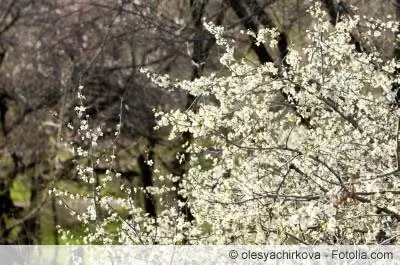
In sandy, dry soil, such as a heather garden, as well as in permanently moist soil along a body of water, you and the garden's beneficial insects will not have much fun with hedge thorns.
Watering and fertilizing
The water and nutrient balance of a Prunus spinosa is at a minimal level. If the wild fruit tree finds a suitable location, these care aspects are limited to the following measures:
- Water blackthorn only in dry summer conditions when there is not enough rain
- When planting, add mature compost and horn shavings to the planting hole
- In subsequent years, apply an organic starting fertilizer at the beginning of March
- Fertilize again in June in poor soil
If the spherical stone fruits are intended for consumption, mineral fertilizers should be avoided. Where the soil conditions do not meet ideal conditions, plant manures such as nettle and comfrey manure provide additional nutrients naturally throughout the year.
Tip:
A freshly planted blackthorn is watered abundantly and regularly in the first few weeks so that the roots can spread quickly. As a result, the water supply is reduced because the shrub feels more comfortable with short-term drought than in permanently moist soil.
Cutting
If there is enough space available for a blackthorn, you can safely do without regular cutting. By nature, an untrimmed hedge becomes completely impenetrable, which your winged and feathered garden inhabitants will certainly appreciate. In small gardens, however, we recommend consistent pruning right from the start. Here's how to do it correctly:
- The best time for a topiary is immediately after flowering at the end of May/beginning of June
- Short branches that are too long to the desired length
- Place the scissors 1-2 mm above an outward-facing eye
- In addition, thin out the entire bush thoroughly
- Cut off all dead wood at the base and remove stunted and diseased branches
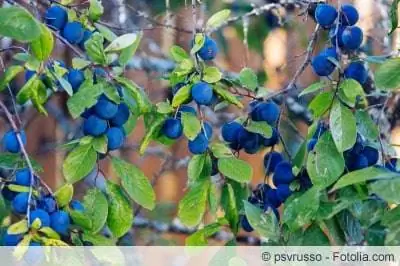
If necessary, don't shy away from bold pruning if a blackthorn threatens to take over the scepter in the garden. The wild wood can easily be cut down to ground level. As long as at least one sleeping eye remains on the shoot, the plant will happily sprout again. The winter sap dormancy is the best time for such a drastic measure. In January or February, pick up the scissors on a frost-free, overcast day, of course well protected with sturdy work clothing and solid gloves.
Tip:
With every cut, check whether a blackthorn is not cheekily trying to overcome the barrier with its roots. In this case, separate the nose-like root runners with a spade and dispose of them in the household waste.
Wintering
As a native wild tree, blackthorn is completely hardy. There are no precautions that need to be taken to ensure that the shrub gets through the cold season he althy. In contrast, early flowering is threatened every year by delayed frosts. From March onwards, keep an eye on the weather forecast to protect the buds and flowers with a fleece or jute hood if necessary.
Propagate
As soon as you cultivate a single specimen in the garden, numerous offspring can be bred from it. The following procedures are available for uncomplicated propagation:
Root cuttings
- Cut off root runners in spring
- Cut to 3-5 cm
- Plant in pots with lean substrate
- Keep constantly slightly moist until the pot is rooted
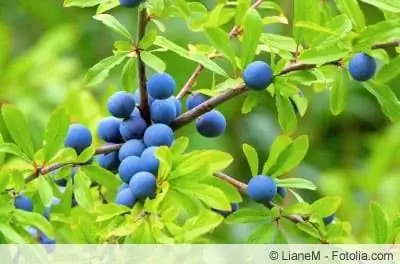
Cuttings
- Cut 10-15 cm long head cuttings during the summer
- Remove the leaves from the lower half and place in pots with peat sand
- Keep slightly moist throughout the winter in a partially shaded location
- Plant out in spring with a strong root system
Lowers
- In early summer, pull half-woody shoots on the outer edge of the bush to the ground
- Cover the middle with soil, fix it with a stone and tie the shoot tip to a wooden stick
- In autumn, cut off the rooted branch and plant it in a sunny location
While the three methods of vegetative propagation presented are quick, generative cultivation through sowing requires a little more effort. Since the seeds are cold germinators, they first go through stratification. To do this, place the seeds in moist sand in the vegetable compartment of the refrigerator for 4-6 weeks. Alternatively, sow the seeds directly in the bed in autumn and let Mother Nature do the rest.
Harvest
From September onwards, the small, black-blue stone fruits ripen on Prunus spinosa. Anyone who tastes the green pulp now will be disappointed by the very sour, bitter taste. This changes immediately after the first frost, as the cold causes a large part of the starch it contains to turn into sugar and at the same time the previously hard pulp becomes softer. How to harvest correctly:
- Put on long-sleeved clothing and thick gloves
- Pick the ripe sloes individually from the branches
- Put the harvested fruits in an airy basket and not in a plastic bag
- Remove the slightly poisonous seeds before further preparation
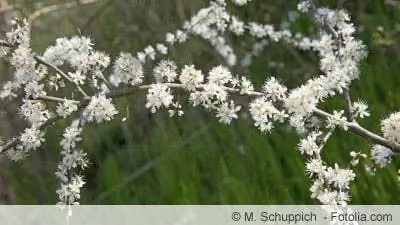
If you harvest the sloes in the wild, please avoid busy roads and proximity to fields where chemical sprays have been used. Furthermore, harvesting is not permitted in nature reserves, as the fruits serve as a food source for numerous endangered bird species.
Tip:
If you don't want to wait until after the first frost to harvest, pick the ripe blackthorn fruits and freeze them for a few days.
Conclusion
Anyone who plants a solitary blackthorn or even a hedge for the benefit of their winged and feathered garden inhabitants will be rewarded with thick wind and privacy protection as well as a rich stone fruit harvest. As long as the defensive thorns and the vehement urge to spread remain in the gardener's field of vision, care is hardly noticeable. Watering is only necessary when the summer is dry. An organic starter fertilizer is sufficient throughout the year, provided the location is rich in nutrients and sunny to partially shaded. This manageable care results in wonderfully fragrant flowers and a lush sloe harvest immediately after the first frost.


